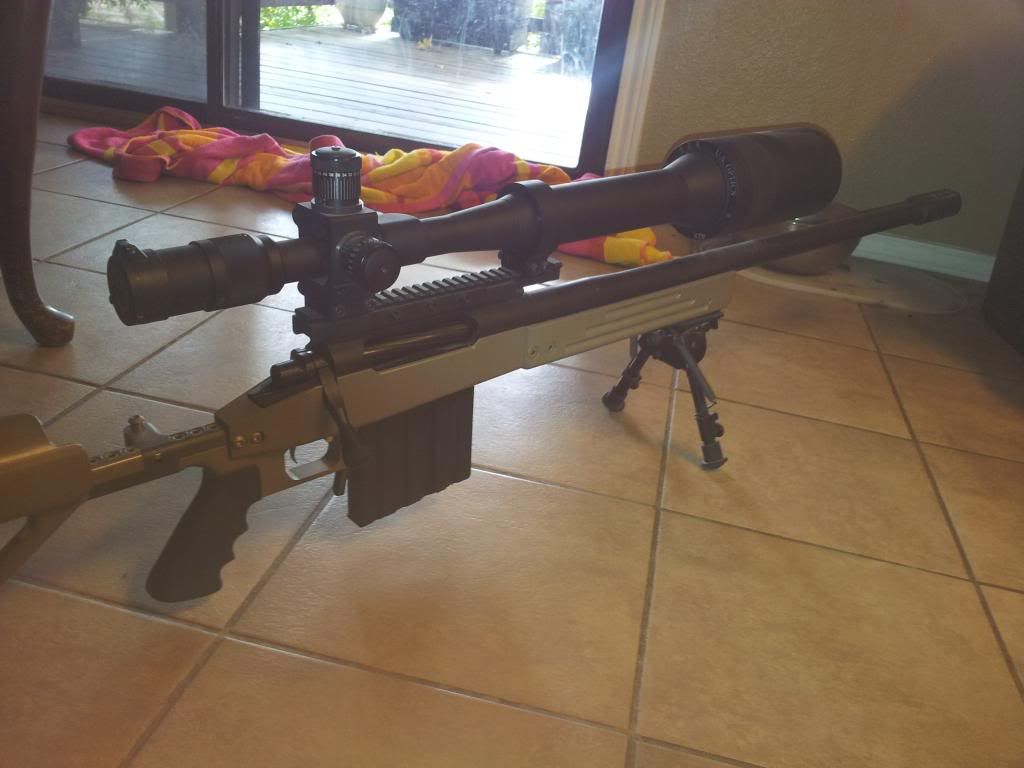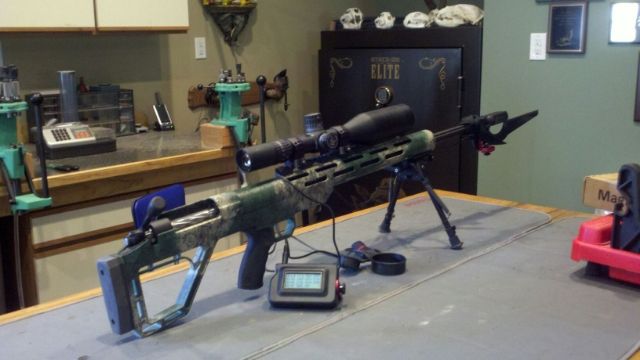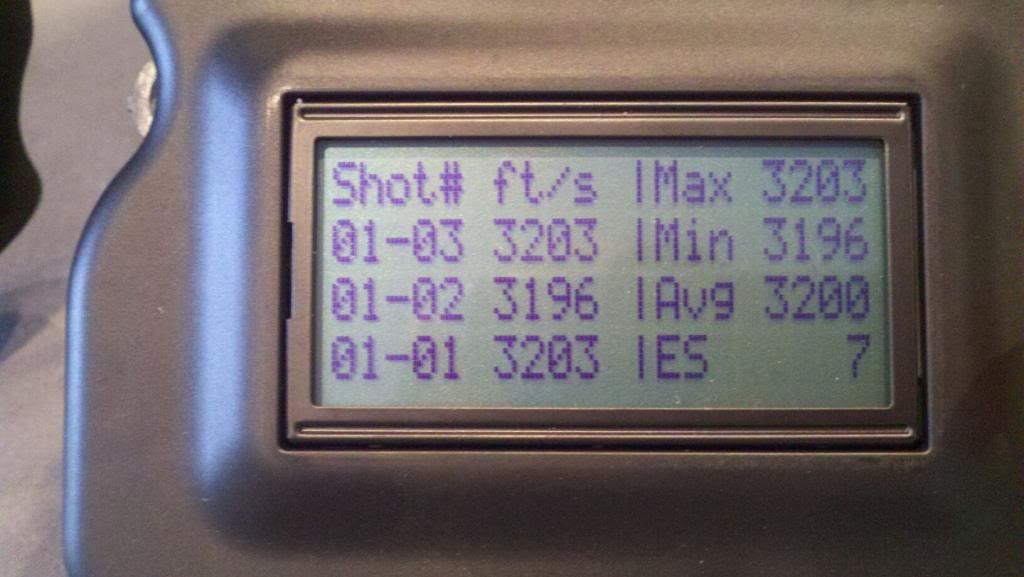I have been shooting my new .375 CheyTac for a few months now out to 1500 with EASE.... I need a better scope to get farther, I need more Magnification.. I'm using a 15 power NF right now, I need something with more power... Any suggestions?
LOL ... there are enough advocates of SFP and FFP in this thread to really confuse the OP.
The best option is perhaps to go to a good quality shop with plenty of stock and try the different scopes outside. Take a camera bi-pod and tape a back bag to the top so you can lie the scopes in the ears and have a steady holding position without touching them to look through them.
At distances which in simple terms are unknown but are definitely ELR you will note the following (hopefully).
On a FFP scope the cross hair does not grow in proportion to the target when you zoom in or out. It covers the same area but you see a much smaller part of the target as magnification increases. This means that if the scope has hold over indents such as mil dots or mil hash marks you will loose the number of these visible to you as you climb in power.
For this reason guys in our sniping teams have had to back off the S&B PMII's to the lower 5x power when wanting to take shots at the longest ELR ranges because they needed to use all the elevation hash marks in the scope to get an aim point way out there. Not an ideal option but the limit in the internal movement of the scope makes this necessary.
The plus side to this however is that with a FFP scope the zero on the rifle will stay true at any magnification which is incredibly important if you want to have consistency between the power bands.
This is the primary advantage of a FFP scope.
The fact that the hash marks on the reticle remain the same on any power is another - but the visible amount of hash marks diminishes the more power you use.
On the SFP scopes the increase in the power band does not alter the size of the cross hair in your field of view but does proportionately mean that the hash marks cover smaller distances the more power you use on the scope and the target increases in size in the field of view.
As a result you tend to want to shoot on maximum power to use the ranging hash marks on the given ranging power ( this is 15x in your NF ) but if you half the power you double the distance shown between the hash marks - so you can increase the amount of distance you can shoot at by dropping down in power by a considerable margin ( so long as you can still see the target to aim at ).
For this reason on a 25x ATACR NF scope you would have if you needed to use the hash marks because you were going above 120 MOA internal adjustment an ability to drop the power down to 12.5x and double the distance of your hold over elevation options or you could use the hash marks on 25x for their given ranging value.
All told, you will be able to shoot further in theory if you need to use the scope reticle with a SFP scope because of this option.
However, their are problems with this. We have tested a lot of SFP scopes and found that zooming down the range to half power can alter your true zero. It varies scope to scope and on the power bands in each scope.
High power 12-42x56 scopes tend to vary more when coming down from 42x to 21x and those coming down from 22x to 11x a bit less.
You won't know the difference until you can test the scope on a rifle ( ideally in a tunnel range to give perfect conditions which is what we used ).
The next item is that on average we found that shooting at around 22x to 25x was the maximum power you could use to recover and see bullet splash at 1000 to 1200 yards.
On higher powers, particularly 42x your loss of sight picture from recoil meant that no splash could be seen.
Important therefore if you plan on shooting ELR on your own without a spotter and hoping to use the scope at higher magnification for precision.
Given the time of flight at ELR it may be feasible to come out of the rifle and check a spotting scope before impact ... that is a way round the issue.
Another issue with higher magnification scopes is the lack of internal elevation adjustment. If you want to go beyond 25x you limit the distance you can shoot because of this.
The only option to get round this is an adjustable gantry rail to give increased elevation options. I have never used one so cannot comment on their consistency.
There is the possibility of using a scope with external adjustment for elevation like the old US sniper scopes and US Optics does a scope with this feature in high magnification but it is expensive and also "huge". The advantage is that the distance limitation on the scope falls away and you can go as far out as you can shoot.
All told you are therefore probably best sticking with scopes with high internal movement and a maximum of 25x. As to whether you want FFP or SFP ... check the amount of internal elevation hash marks seen on 25x in a FFP and a SFP and work out on a balisitic calculator how far this gives you in distance for your load and whether this is the maximum for the load or whether this eclipses the maximum distance you are likely to have available to shoot.
If I had the money I would look at a NF Beast because it gives lots of internal adjustment in a FFP. If I wanted to get a scope now ... the ATACR is available and I would settle for shooting it as far out as 25x would allow. I would test it for variation when dropping down to 12.5x and see what the scope did but I doubt I would be shooting that far out that I needed to go beyond the hash mark options at 25x.
Hope this helps ...
I forgot to add that in hotter climates mirage will often dictate the magnification you can use. In these circumstances a FFP is likely to prove a better option as the zero will remain true at any power and so will the hash mark values. It also enables you to maximise what can be used as a power. SFP scopes would usually need to be halved in power to enable the hash marks to be used easily. i.e. Shooting on 15x would need a calculator and a pen and pad to work out what the hash marks meant if you were wanting to adjust the scope. You can however overcome this somewhat by simply aiming off using hash marks as reference points for hold over having seen the initial impact. Many of us use this option rather than mess about with calculations for windage/elevation correction if we are close enough.
You do however have to do the maths to get the elevation right if using the hash marks to get a point of aim to take the first shot.





